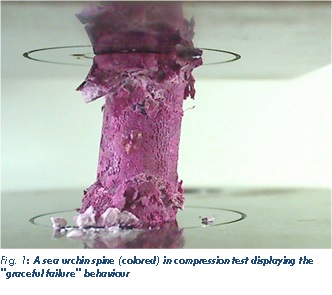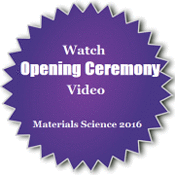
Klaus G. Nickel
University Tübingen, Germany
Title: The potential of improving building construction materials by a biomimetic approach
Biography
Biography: Klaus G. Nickel
Abstract
The design of spines from some reef inhabiting sea urchins (Heterocentrotus mamilatus, Phyllacanthus imperialis) has been shown to be responsible for a high energy dissipation during compressive straining. It is shown that unusually high stresses are required to compress the material, which fails in a "graceful" manner during an overall straining of several tens of percent. The principal behind the mechanism involves the layering / gradation / ordering of pore space within a basically brittle material (Calcite). We will show the details of the structures and the results of the characterization by uniaxial compression and pin indentation. The natural material has a hierarchical design including a structuring on the nano-scale to prevent a failure by simple cleavage. It would therefore be difficult to scale up all structural features of this brittle material. We will discuss how improvements of material can nonetheless be implemented by abstracting only the more macroscopic features and choosing a suitable material.
First efforts to apply this biomimetic principle to concrete as a modification of functional graded concretes confirm the effectiveness in construction materials. The design is not only beneficial for failure tolerance in cases of impacting objects but improves at the same time thermal insulation properties and lowers the total weight of constructions. The concrete was realized by spraying and slip casting methods. We will also present a recently developed alternative method for the manufacture of 3D concrete constructions (“hydroplotting”), which allows the realization of very detailed designs.


